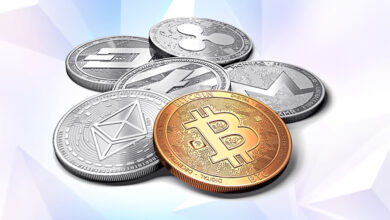Use of Tether Rises in Sanctioned Countries

Tether (USDT) is gaining significant traction in countries facing economic difficulties, as individuals and businesses turn to this digital currency to preserve the value of their savings and facilitate financial transactions.
According to data from Chainalysis, the use of USDT is notably increasing in regions such as Eastern Europe, the Middle East, and Africa. However, this trend raises questions about the potential implications of increased cryptocurrency adoption, especially regarding financial stability and the facilitation of illicit activities.
Surge in Usage in Sanctioned Areas
From the beginning of the year until October 8, there has been a marked increase in the number of digital wallets containing Tether, particularly in major cities like Moscow, Tehran, Kigali, and Istanbul. Data shows that peak activity occurs during busy daytime hours, indicating a sustained growth in the use of this digital currency in these regions.
This rise in USDT adoption is largely driven by the desire to circumvent restrictions imposed on traditional currencies in sanctioned countries, as well as the need to maintain the value of savings amid inflation and economic volatility. However, the global accessibility of digital wallets complicates the ability to determine whether this uptick specifically reflects increased interest in USDT or is part of a broader trend towards cryptocurrency adoption.
Tether’s Response to Concerns
Amid growing concerns regarding the use of Tether (USDT) in illicit activities, Paolo Ardoino, CEO of Tether, reaffirmed the company’s commitment to transparency and compliance with regulations. Nonetheless, speculation continues about the potential for U.S. authorities to initiate a formal investigation into Tether to assess its adherence to anti-money laundering laws and sanctions regulations. Such regulatory actions could undermine investor confidence in Tether and increase compliance costs for companies operating in the cryptocurrency space.
The increasing reliance on USDT in sanctioned areas raises alarms for regulators about the potential exploitation of this currency for illegal activities. As individuals and businesses increasingly depend on USDT to navigate the constraints of traditional currencies, there is an urgent need for a clear regulatory framework to govern the use of cryptocurrencies.
Looking ahead, a tightening of oversight on stablecoins is anticipated, which could lead to new restrictions on USDT’s use in certain regions. However, this development does not diminish the significance of digital currencies as a promising financial alternative, meeting the needs of a large user base seeking flexible and user-friendly financial solutions.
The Role of Stablecoins in Digital Currency Infrastructure
Stablecoins like USDT play a crucial role in the digital currency infrastructure, providing a stable, fast, and transparent means for financial transactions.
Given the rapid advancements in financial technology, stablecoins are expected to experience accelerated growth in the coming years, playing a pivotal role in enhancing financial inclusion and facilitating international trade. Nonetheless, this rapid growth presents new regulatory challenges, necessitating policymakers to establish clear legal frameworks to ensure the safe and responsible use of stablecoins.





